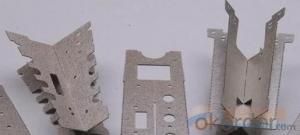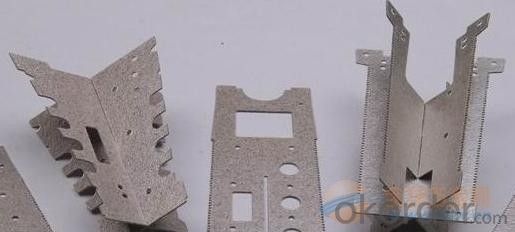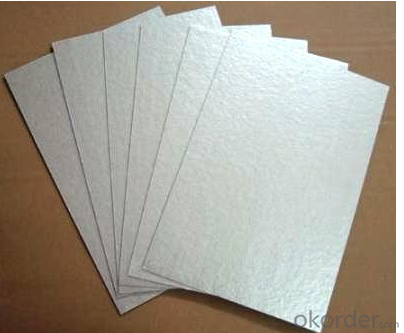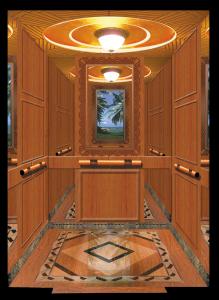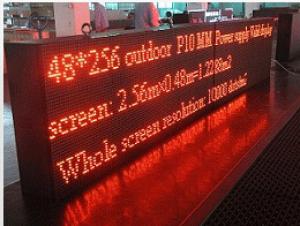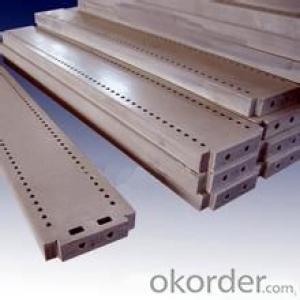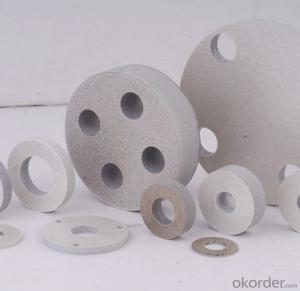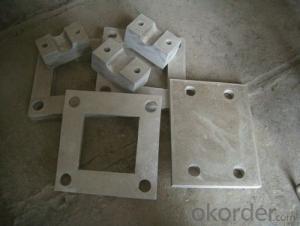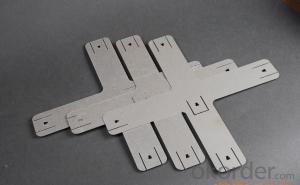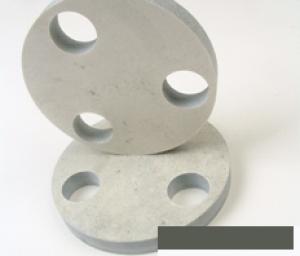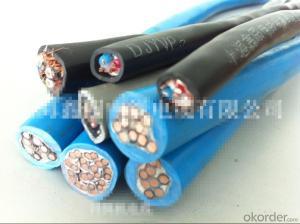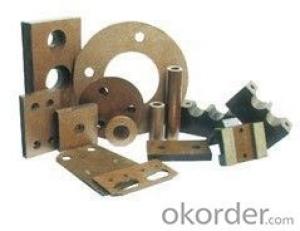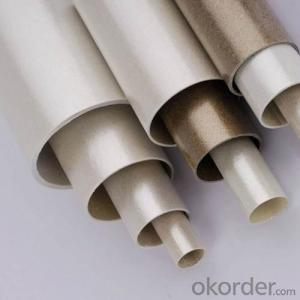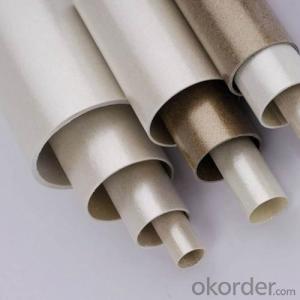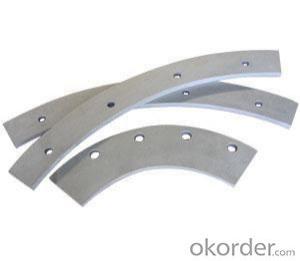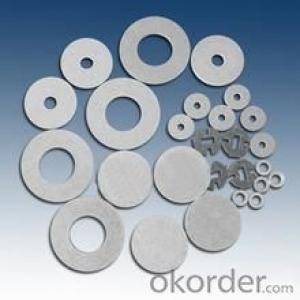Mica Parts Used in High Temperature Equipments
- Loading Port:
- Shanghai
- Payment Terms:
- TT OR LC
- Min Order Qty:
- 100 pc
- Supply Capability:
- 10000 pc/month
OKorder Service Pledge
OKorder Financial Service
You Might Also Like
1. Introductions:
Mica plate is made of mica paper with highperformance organic silicon resin. After heating and pressing, the mica plate can be made into rigid or flexible insulating plates. The mica content is about 90% and the organic silicon resin content is 10%.
2. Applications:
This series mica plates are used mainly in household appliances (toaster ovens, microwave ovens, warm air blowers, hair dryers, electric iron etc.), metallurgy (such as linefrequency furnaces, medium frequency furnaces, electric arc furnace, etc.), medical equipment and other industries, used as the heating support, lining plate and partition plate of the electric appliances described above.
3. Main features of Mica Parts:
Rigid mica plates are featured with high strength, good performance, less smoke, less odor etc.
4. Technical Parameters:
MICA SHEET -----Technical data | ||||||||
ITEM | UNIT | RM | RP | RM-T | RP-T | FM | FP | |
Hardness |
| Rigid | Rigid | Rigid | Rigid | Flexible | Flexible | |
Mica paper |
| Muscovite | Phlogopite | Muscovite | Phlogopite | Muscovite | Phlogopite | |
Thickness | mm | 0.1-2.0 | 0.1-2.0 | 3.0-50 | 3.0-50 | 0.1-2.0 | 0.1-2.0 | |
Mica content | % | ≥90 | ≥90 | >88 | >88 | ≥90 | ≥90 | |
Bond Content | % | <10< span=""> | <10< span=""> | <12< span=""> | <12< span=""> | <10< span=""> | <10< span=""> | |
Density | g/m 3 | 1.6~2.45 | 1.6~2.45 | 2.1~2.4 | 2.1~2.4 | 1.6~2.45 | 1.6~2.45 | |
Heat | Continuous | ℃ | 500 | 700 | 500 | 700 | 500 | 700 |
Peak | ℃ | 700 | 900 | 700 | 900 | 700 | 900 | |
Heat loss at 500℃ | % | <1< span=""> | <1< span=""> | <1< span=""> | <2< span=""> | <1< span=""> | <1< span=""> | |
Heat loss at 700℃ | % | <2< span=""> | <2< span=""> | <1< span=""> | <2< span=""> | <2< span=""> | <2< span=""> | |
Flexural strength | Mpa | >160 | >140 | — | — | <1< span=""> | <1< span=""> | |
Water absorption 24h/23°C | % | <1< span=""> | <1< span=""> | <1< span=""> | <2< span=""> | — | — | |
Dielectric strength | KV/mm | >20 | >20 | >15 | >15 | >15 | >15 | |
Volume | 23℃ | ΩNaN | >1017 | >1017 | >1017 | >1017 | — | — |
500℃ | ΩNaN | >1012 | >1012 | >1012 | >1012 | — | — | |
Smoking Test | s | <4< span=""> | <4< span=""> | — | — | — | — | |
FAQ
--------What is the use of mica parts?
Mica laminate and washers made of our own high quality mica plates are used for home appliances, electro-magnets, micro-sensitive control gear etc
---------Which type of mica parts we can produce?
1. Rigid mica parts or Flexible mica parts
2. Muscovite mica parts or phlogopite mica parts
3. Thin mica parts or thick mica parts
4. All the special sized mica parts need drawing.
----------what advantages of mica parts?
1. Good high voltage insulation materials
2. Do not easily break up
3. Easily produce special size
- Q: There are a lot of online about this, but still do not understand. If the insulation resistance is high enough, hit the pressure should also be qualified ah. There is insulation test itself when the current flow is not large, because the rock table resistance is great. But hit the pressure, I do not know is not a direct high pressure drop in the test product above, there is no great resistance to interference?
- Insulation test Because the test voltage is low, it is not easy to damage the equipment under test. The voltage test is easy to damage the equipment under pressure when the test voltage is high. In some cases, although the withstand voltage test is passed, Causing damage, the test staff will have to use low-voltage insulation test, test the pressure test after the test equipment insulation. Under normal circumstances, insulation resistance qualified, withstand voltage test will be adopted.
- Q: Insulation material and the definition of the role of the best professional insulation materials website for my reference
- Electrical strength is the breakdown of the voltage between the voltage and the two electrodes subjected to the applied voltage under the specified conditions, that is, the breakdown voltage per unit thickness. For insulating materials, the general breakdown voltage, electrical strength of the value of the higher the better. 4, tensile strength: in the tensile test, the sample to withstand the maximum tensile stress. It is the most widely used and tested test of the mechanical properties of insulating materials. 5, Flammability: refers to the insulation material in contact with the flame to resist combustion or leave the flame to prevent the ability to continue to burn. With the increasing use of insulating materials, its flammability requirements are more important, people through various means to improve and improve the insulation
- Q: Who knows what are the ability of 1300 degrees above the high temperature, insulation materials?
- High temperature resistant materials include refractory and heat resistant materials, inorganic compounds, and polymer materials. Refractory material usually refers to the resistance of 1580 ℃ above the temperature of inorganic materials. They are built kilns, combustion chambers and other building materials that require high temperatures. General use of quartz sand, clay, magnesite, dolomite as raw materials and made, such as refractory cement, magnesia and so on. Broadly speaking, inorganic refractory, heat-resistant materials refers to the high hardness of these compounds, good brittleness, good chemical resistance, and the melting point of 1500 or more. Mainly divided into metal and non-metallic compounds and non-metallic compounds.
- Q: What insulating materials are used for high frequency transformers?
- Which is divided into solvent and solvent-free paint is divided into two major categories, mainly used for dipping motor, electrical coil and insulation parts to fill its gap and microporous, immersion paint can be cured in the surface of the formation of continuous formation Of the film, and the coil into a solid as a whole, in order to improve the insulation structure of the moisture, thermal conductivity, dielectric strength and mechanical strength of the performance.
- Q: What is the insulating material in the middle of the connecting wire?
- With a transparent tape isolation, with hot melt adhesive fixed thread, with heat shrink tube insulation, a lot of ways ah.
- Q: What is the main purpose of insulating materials?
- Tensile strength: The cross-sectional area of the insulating material can withstand tensile forces, such as glass per square centimeter cross-sectional area can withstand the resistance of 1400 Newton.
- Q: What is the DMD insulation material?
- DMD insulating paper, the product is a layer of polyester film coated with adhesive, one side for the polyester fiber non-woven composite, calendering from a composite insulation products, referred to as DMD.
- Q: What are the commonly used insulating materials?
- Mainly used for motor, electrical winding insulation, switch the bottom plate and insulators, etc. Organic insulation materials are: shellac, resin, rubber, cotton yarn, paper, linen, rayon,
- Q: Wear-resistant, high temperature, insulation materials which
- Polytetrafluoroethylene (engineering plastics) - (- 195 ~ 250) ℃ can be used for a long time. For corrosion-resistant parts, anti-friction wear parts, seals, insulation and so on. Silicone rubber - Upper temperature limit (100 to 300) ° C. For high and low temperature parts, insulation, pipe joints and so on. Fluorine rubber - the use of the upper temperature of 300 ℃, for chemical lining, senior seals, high vacuum plastic parts.
- Q: What insulating material is best `?
- According to their polarity is divided into weak polarity, non-polarity, polarity and strong polarity 4. According to the material source is divided into mineral insulating oil, synthetic insulating oil and vegetable oil 3. Mineral insulating oil referred to as mineral oil, The relative dielectric constant is about 2.2, and the breakdown voltage in the standard electrode is 35 to 50 kV (kV). The flash point is 125 to 135 ° C for the manufacture of transformers and cables , Capacitors, etc. Synthetic insulating oil is a synthetic liquid insulating material.As the mineral oil is a mixture of various hydrocarbons, it is difficult to remove the components of the insulation performance, and the preparation process is complex, easy to burn, low heat resistance , The dielectric constant is not high, so the research and development of the excellent performance of the synthetic insulating oil. Now have used aromatic synthetic oil, silicone oil, ester oil, ether and sulfone synthetic oil, polybutylene, etc. Vegetable oil use Castor oil, soybean oil, rapeseed oil, etc. Castor oil is an excellent dip capacitor for pulse capacitors
Send your message to us
Mica Parts Used in High Temperature Equipments
- Loading Port:
- Shanghai
- Payment Terms:
- TT OR LC
- Min Order Qty:
- 100 pc
- Supply Capability:
- 10000 pc/month
OKorder Service Pledge
OKorder Financial Service
Similar products
Hot products
Hot Searches
